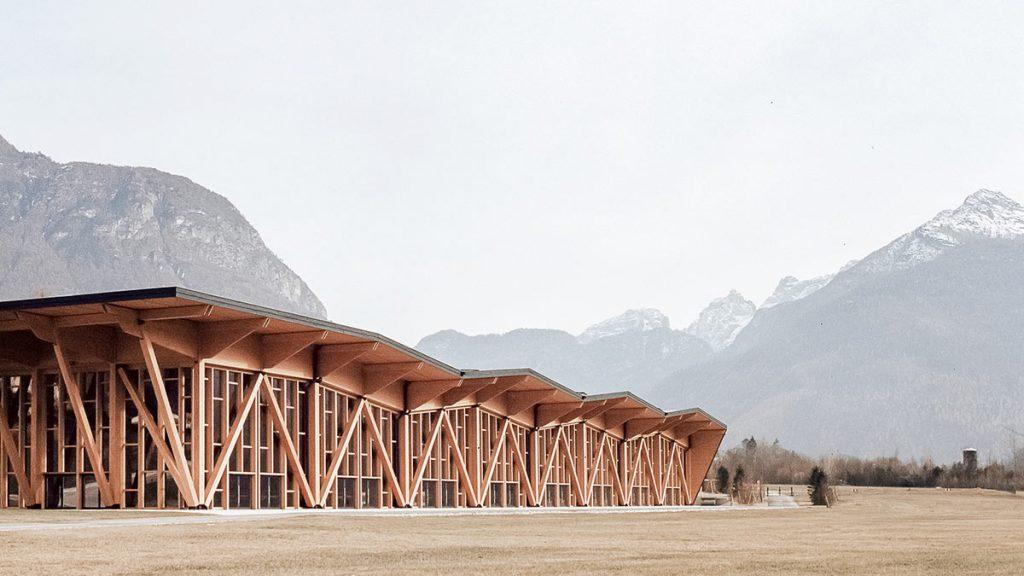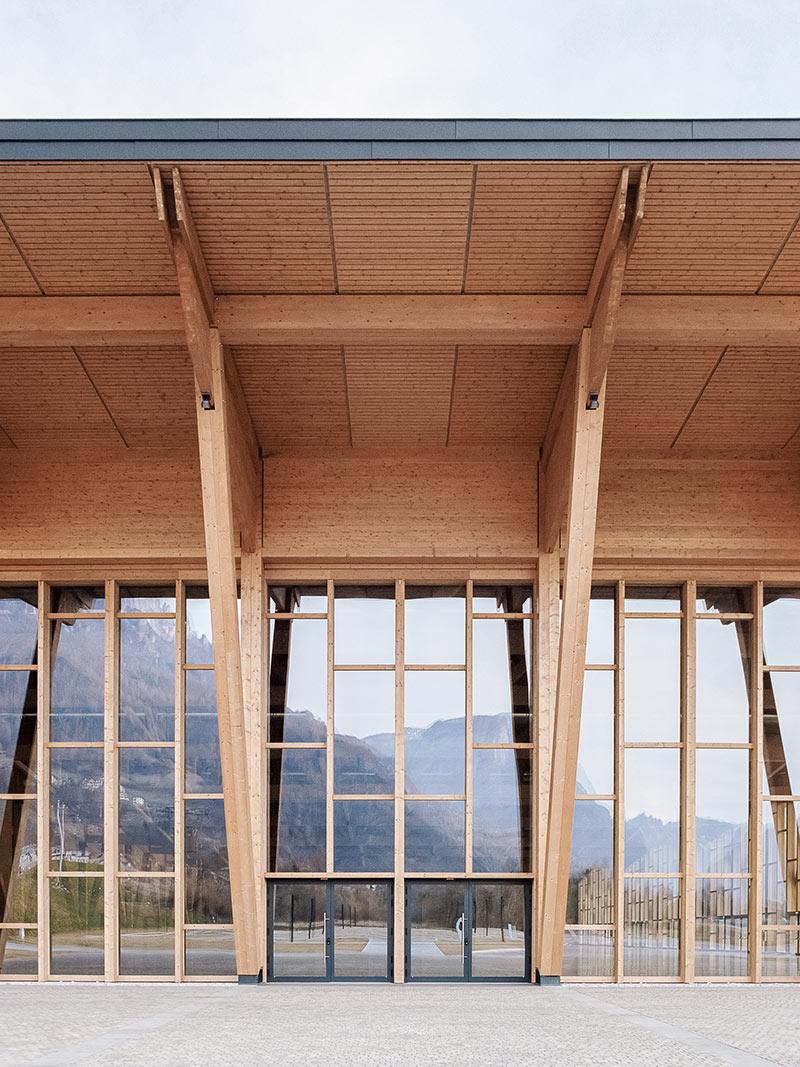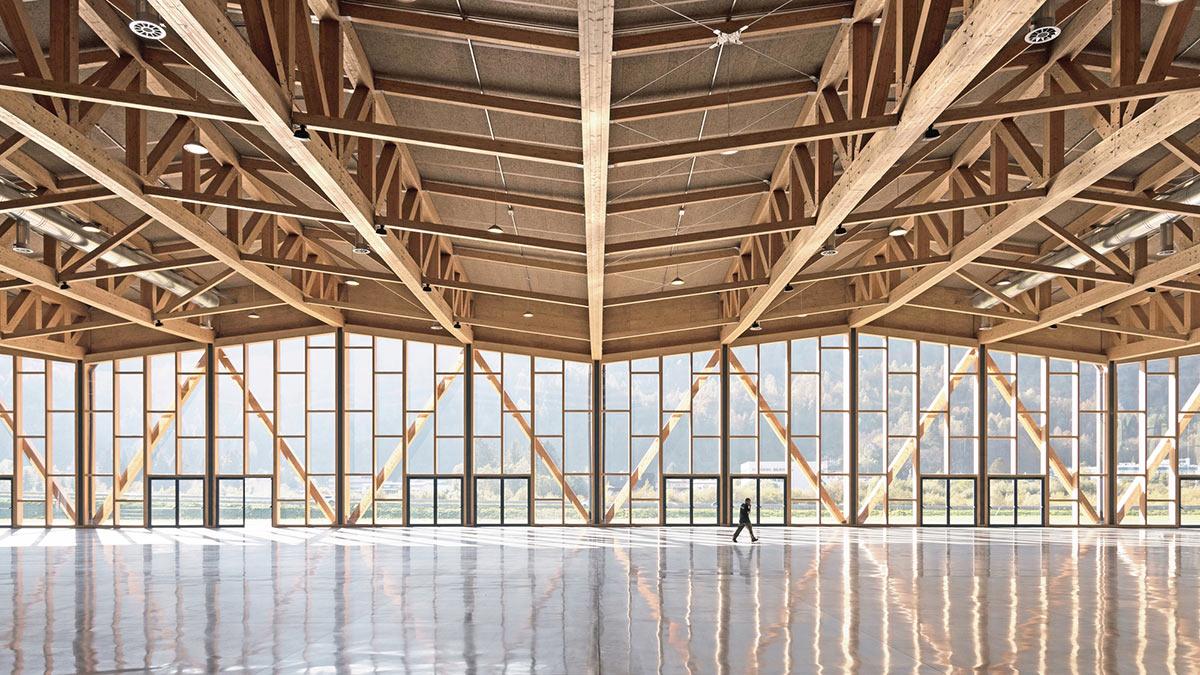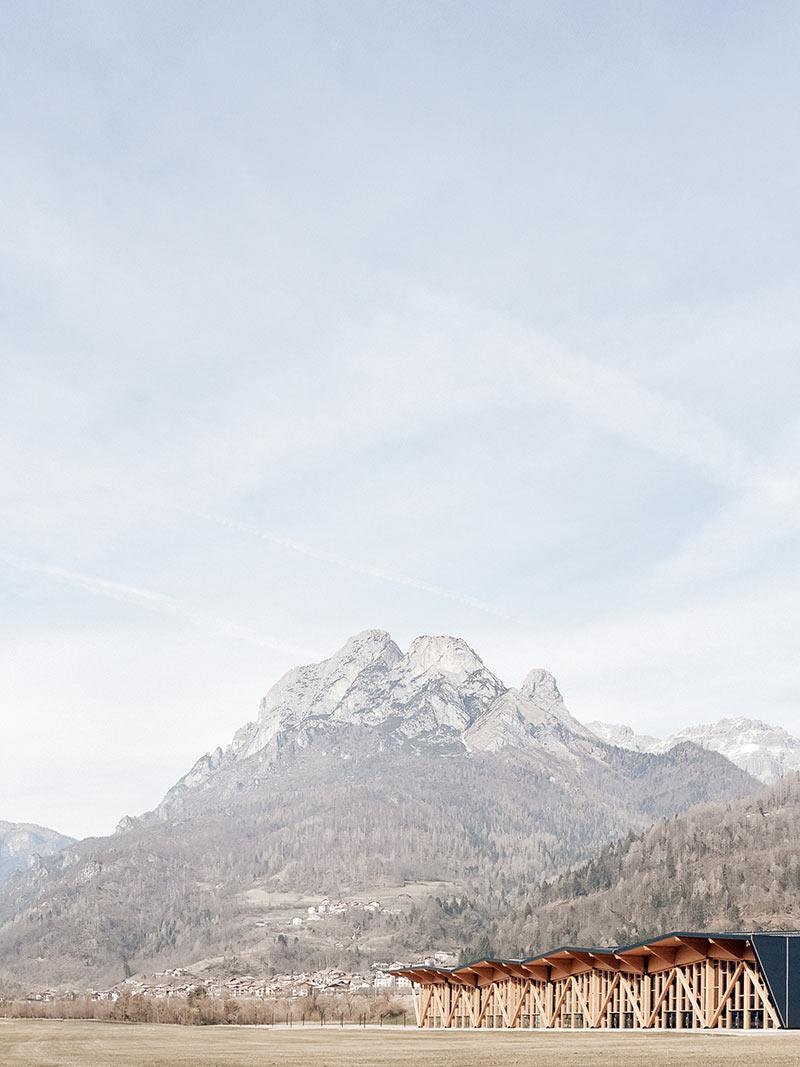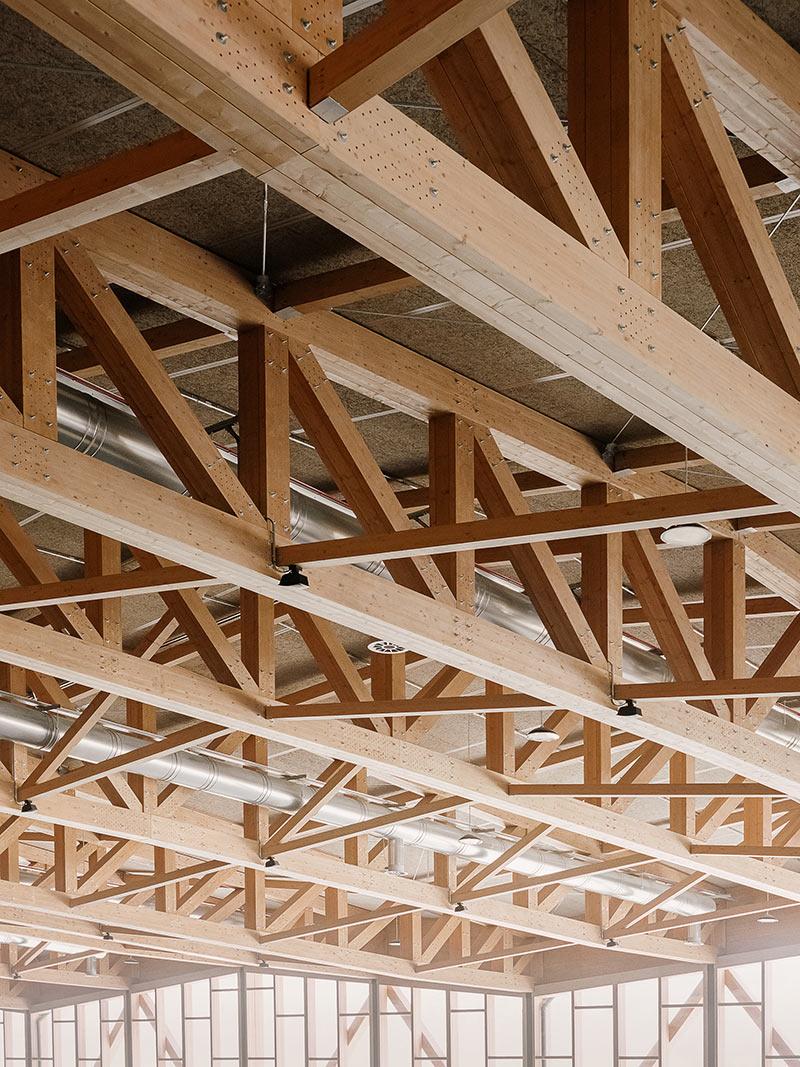Mediating between mountain and valley
Its design blends alpine architecture with the outline of a craggy mountain range. The Congress and Exhibition Centre in the municipality of Agordo in northern Italy reimagines aesthetic forms of expression in timber construction.
The high peaks of the Dolomites served as inspiration for their own form of alpine construction. Known as “tabià”, these characteristic wooden barns are built on a stone pedestal, with the bottom mostly used as a stable for animals and space up above for hay, firewood and grain. Even though many of them have now been converted into luxury chalets, their partially gridded facade apertures still shape the look of the architecture in Italy’s mountain valleys. Aside from their aesthetics, the tabià are also especially significant on a sociocultural level as they were traditionally constructed on the basis of a socioeconomic collaboration. In other words, everybody helped in their own way, without receiving payment for a specific service. In return, people could count on the help of the community when they built their own tabià.
Inspired by regional timber construction
For the new Congress and Exhibition Centre in Agordo, situated in the province of Belluno in north-eastern Italy, the designers took these traditional barns as their creative stimulus. The architects Andrea Botter and Emanuele Bressan created an interconnection between the region’s traditional typology and its surrounding alpine landscape. It is a balanced confluence of the settlement area in the valley and the rugged mountain ridges towering above.
The project looks at Agordo’s typical landscape and urban morphology to create a new language.
Andrea Botter and Emanuele Bressan, architects
With its series of gently inclined pitched roofs, the elongated complex calmly undulates and therefore seems very organic. It is like a length of fabric that nestles into the shape of the landscape. The visible diagonal braces are part of the structure – they reinforce the timber construction along the long side walls – and at the same time they remain a deliberate part of the design. As a variant of the X-shaped exterior struts familiar from earlier tabià, they ensure that existing timber design is passed to the next generation. The architects explain their approach to the design: “The project looks at Agordo’s typical landscape and urban morphology to create a new language.”
Ecological construction and operation
The choice of timber for the load-bearing structure was naturally not just inspired by traditional alpine constructions, but also influenced by the pursuit of ecological sustainability. Using wood as a building material and also the structural design both ensure an excellent carbon footprint for the construction and also operation of the conference centre. Large roof overhangs (5 to 8.5 metres) protect the timber structure from the force of the weather. They also reduce the direct sunlight on the floor-to-ceiling glass facades to the north and west sides in the summer. In the winter, the space is warmed by the sun when it is low in the sky, which reduces heating costs.
With its glass facades and visible timber construction, the building’s highly transparent design has a sense of lightness despite its impressive volume of approx. 80,000 cubic metres. It was assembled according to customary procedures for constructional timber design, with the prefabricated and partially preassembled construction elements being assembled on-site using cranes. This enabled an extremely short construction time of only two months.
Respect for the land and its people
The complex is used for public and private events with a capacity of around 5,000 people. It offers added value for the community, as concerts, theatre, conventions, conferences, trade fairs and art exhibitions take place here. The architects emphasize: “Although the Conference Centre is positioned outside the urban settlement, it has a strong strategic nature and it is well connected to the public network.”
Due to its connection with the region’s architectural design, its airy timber-frame construction acts as a mediator between mountain and valley and also creates a link between past and future. It is a model of contemporary architecture that shows respect and sensitivity in its approach to the land and its people.
Text: Gertraud Gerst
Translation: Rosemary Bridger-Lippe
Photos: Simone Bossi
